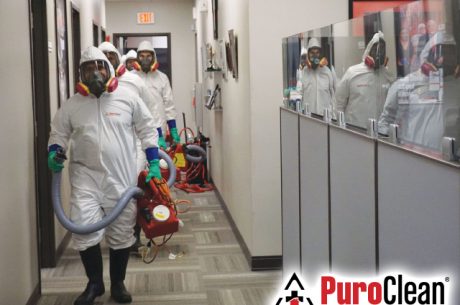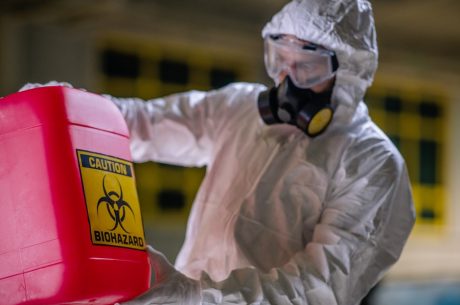Table of Contents
Sewage cleanup is one of the most urgent and hazardous tasks homeowners in Scottsdale may face. Whether triggered by heavy monsoon rains, clogged sewer lines, or plumbing malfunctions, sewage spills create unsafe living conditions and demand immediate action. Beyond the foul odor, sewage carries harmful bacteria, viruses, and contaminants that put families at risk. In this guide, we’ll explain the health hazards of sewage exposure, share essential safety tips, highlight best practices for effective cleanup, and outline when it’s best to call professionals in Scottsdale to handle the job.
What Is Sewage Backup?
Sewage backup occurs when wastewater that should drain away flows back into your home through sinks, toilets, or drains. In Scottsdale, this often happens during intense storms that overwhelm the city’s sewer systems, tree roots that invade underground pipes, or blockages caused by grease and non-biodegradable waste. Unlike clean water leaks, sewage contains dangerous pathogens that require specialized handling to protect both your property and your health.
Health Hazards of Sewage Exposure
Bacteria, Viruses, and Parasites
Sewage carries harmful microorganisms like Salmonella, E. coli, and Hepatitis A. Direct contact or accidental ingestion can lead to severe illnesses and infections.
Respiratory Issues and Skin Infections
Airborne particles from dried sewage can cause breathing difficulties, especially for asthma sufferers. Skin contact can result in rashes, irritation, or even fungal infections.
Contamination of Household Items
Sewage quickly contaminates carpets, furniture, drywall, and personal belongings. Often, these items cannot be salvaged and must be discarded for safety.
Essential Safety Precautions
Protective Clothing and Gear
When handling sewage cleanup, wear heavy-duty gloves, waterproof boots, goggles, and an N95 mask. These create a protective barrier between you and harmful pathogens.
Avoiding Direct Contact
Never attempt cleanup with bare hands. Even minor cuts or scrapes can become entry points for dangerous bacteria.
Ventilating the Area
Improve airflow by opening windows and using fans. However, be mindful not to spread contaminated air to unaffected areas of the home.
Best Practices for Sewage Cleanup
Immediate Removal of Standing Sewage
Standing sewage should be pumped or vacuumed out right away. The longer it sits, the more extensive and dangerous the contamination becomes.
Disinfecting and Sanitizing Surfaces
After sewage removal, clean all affected surfaces thoroughly with antimicrobial cleaners. Scottsdale’s warm climate allows bacteria to multiply quickly, making proper disinfection essential.
Disposing of Unsalvageable Materials
Porous items like carpeting, insulation, and upholstered furniture absorb contaminants. Safely discarding these prevents further spread of harmful bacteria.
Drying and Dehumidifying
Moisture left behind encourages mold growth. Use dehumidifiers and industrial fans to ensure the area is completely dry.
When to Call Professionals
Large-Scale Contamination
If multiple rooms are affected, or if sewage has penetrated walls and flooring, professional sewage cleanup is the safest solution.
Specialized Equipment and Expertise
Professionals in Scottsdale use industrial-grade disinfectants, protective equipment, and drying systems to fully restore properties.
Safe and Thorough Restoration
By working with trusted experts like PuroClean Restoration Specialists, homeowners can ensure faster, safer, and more reliable cleanup that prevents long-term damage.
Preventing Future Sewage Backups
Regular Plumbing Maintenance
Scheduling inspections helps detect potential issues before they escalate into serious sewage problems.
Proper Waste Disposal
Avoid flushing grease, diapers, wipes, or other non-biodegradable materials. These are common causes of sewer line clogs.
Installing Preventive Systems
Backwater valves and sump pumps can protect homes in Scottsdale during heavy rains by keeping sewage from backing into drains.
DIY vs Professional Cleanup
Small sewage spills can sometimes be managed with the right gear and cleaning products. However, DIY cleanup is risky because hidden contamination may remain. Professional cleanup may cost more upfront but ensures complete sanitation, protects health, and provides insurance documentation if needed.
Protecting Your Family During and After Cleanup
Isolate Affected Areas
Keep children, elderly family members, and pets away until the space is fully cleaned and sanitized.
Use Air Purifiers
HEPA filters help remove airborne contaminants that may linger after cleanup.
Inspect for Mold and Hidden Contamination
Follow-up checks ensure no bacteria or mold remain hidden behind walls, floors, or ceilings.
Insurance and Legal Considerations
Coverage for Sewage Cleanup
Not all home insurance policies cover sewage backup. Scottsdale homeowners should review their coverage and consider adding sewer backup protection.
Documenting the Damage
Take photos, videos, and keep receipts for all cleanup and restoration work. Proper documentation strengthens insurance claims.
Conclusion
Sewage cleanup is not just about restoring your property—it’s about protecting your family’s health and safety. For minor incidents, protective gear and thorough sanitization may be enough, but large-scale contamination requires professional expertise. In Scottsdale, trusted experts like PuroClean Restoration Specialists offer fast, safe, and reliable solutions to ensure your home is fully restored. When sewage backup strikes, acting quickly and safely is the key to minimizing risks and preventing long-term damage.
FAQs
1. How dangerous is sewage cleanup?
Sewage cleanup is extremely hazardous due to bacteria, viruses, and toxins. Without protection, it can cause serious health problems.
2. Can I handle sewage cleanup myself?
Minor spills may be manageable with proper gear, but larger issues in Scottsdale should always be handled by professionals.
3. How long does professional sewage cleanup take?
Depending on severity, cleanup can take several hours to a few days.
4. Does home insurance cover sewage cleanup in Scottsdale?
Some policies do, but many require additional sewer backup coverage.
5. How do I prevent sewage backups?
Schedule regular plumbing maintenance, dispose of waste properly, and consider installing backwater valves to prevent backups.




 PuroClean Restoration Specialists
PuroClean Restoration Specialists